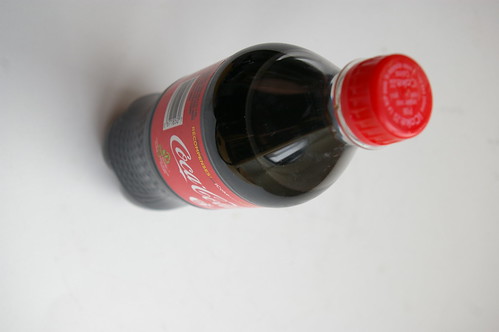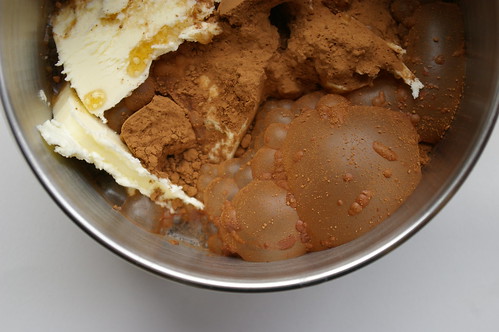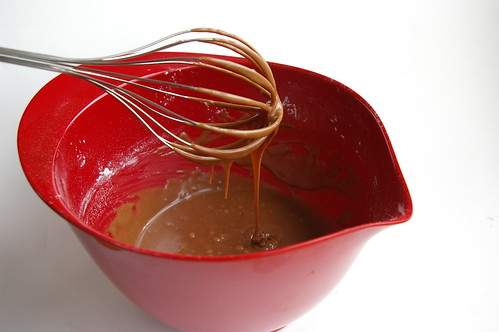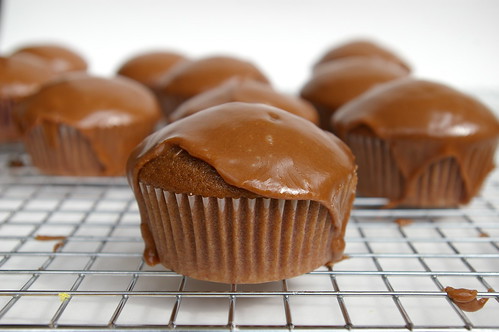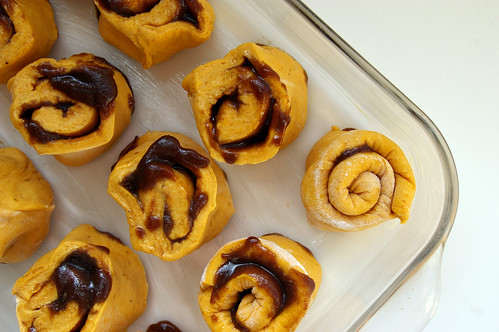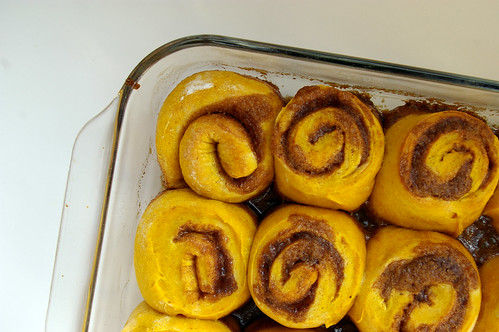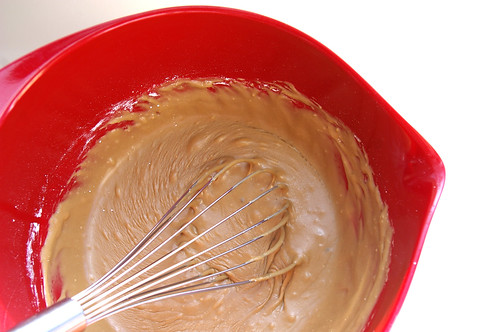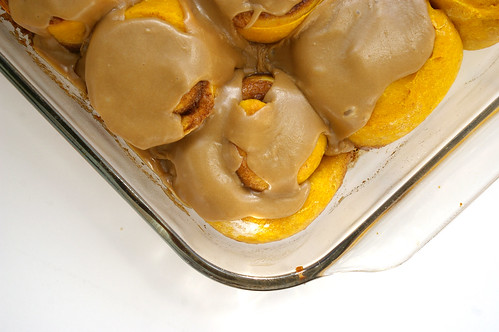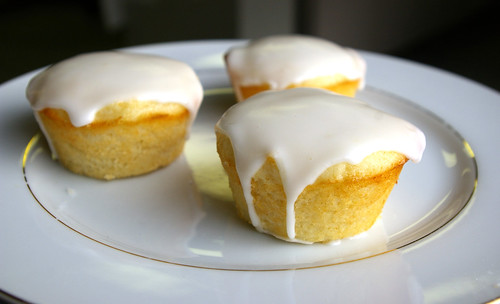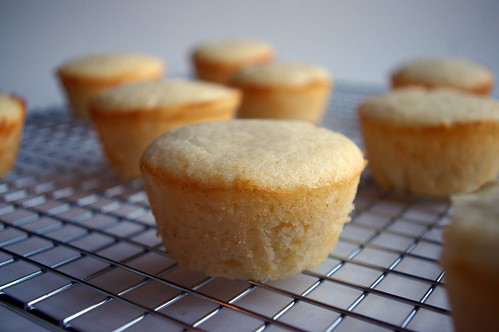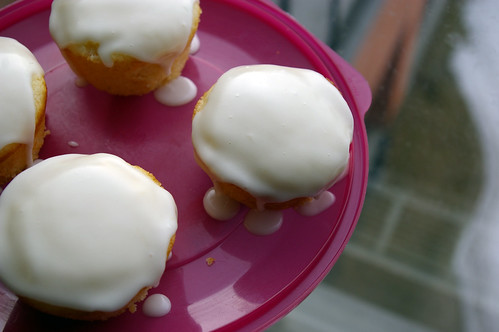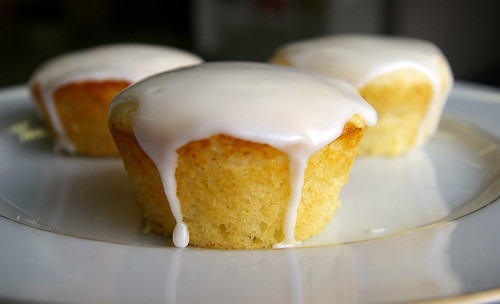I’m not going to tell you how exactly how long this has been sitting in the vault. But I’ll give you a hint; I made these for someone who had given up drinking coca-cola for Lent. Yeah, I should probably join some sort of 12-step program for procrastinators.
But I digress . . . .
So, I thought it would be hilarious to make Coca-cola Cupcakes with Glaze for a friend. Only after I brought them to her did I realize that maybe her giving up Coke for Lent probably meant any consumption of the cola and that in my effort to be funny I might actually be undoing her commitment. She assured me that she had only given up drinking Coke and that she saw the humour in the cupcakes. I continued to feel guilt through much of Lent.
I can’t actually remember how or when I stumbled on this recipe in Nigella Lawson’s How to Be a Domestic Goddess, but I had marked it with a Post-it note at some point and then I think I just connected the dots later. It’s only one of about 12 recipes that have little tags marking them as “to-make,” so I guess I should get going on that.
One of the things I love about Nigella’s recipes are some of them call for simply melting the butter instead of waiting it to come to room temperature. For someone like me, who sometimes wants to make things relatively on impulse (read: impatient), this means I still can. No waiting.
And it was kind of fun to make these. Not only because of the odd mix of ingredients but also because the reaction between the cocoa and Coke was a bit hypnotic. Giant bubbles, that pretty much sums it up.
I was a little freaked out by how thin the batter was, but they bake up beautifully. They’re so . . . light. I don’t know how else to describe them. They certainly don’t taste like Coke, but it’s still charming to say that’s the not-so-secret ingredient.
The original recipe is for a full cake and, although Nigella suggests you can make cupcakes, she doesn’t give a baking time. I guessed at 15 minutes and when I checked them they were perfectly done. However, she says it will make 12 cupcakes and it made 16 for me (An ongoing problem for me is I always end up with more cupcakes than the recipe specifies. Unsure if I make them smaller or if my muffin tin is smaller? Ok, “problem” isn’t really the right word.)
So, if your batter fits perfectly in 12, I’d bank on it taking a few more minutes.
Coca-cola Cupcakes with Glaze
- 200 g plain flour
- 250 g sugar
- 1/2 teaspoon baking soda
- 1/4 teaspoon salt
- 1 large egg
- 125 mL buttermilk
- 1 teaspoon vanilla
- 125 g unsalted butter
- 2 tablespoons cocoa powder
- 175 mL Coca-cola
Preheat the oven to 350F.
In a large bowl, combine the flour, sugar, baking soda and salt. Beat the egg, buttermilk and vanilla in in a measuring jug. In a heavy-based saucepan, melt the butter, cocoa and Coca-cola, heating it gently. Pour into the dry ingredients, stir well with a wooden spoon, and then add the liquid ingredients from the jug, beating until it is well blended.
Pour into a muffin tin that has been greased or lined with papers and bake for 15 minutes (or more, see above) until a tester comes out clean.
Glaze
- 225 g icing sugar
- 2 tablespoons butter
- 3 tablespoons Coca-cola
- 1 tablespoon cocoa powder
- 1/2 teaspoon vanilla
Sieve the icing sugar and set aside. In a heavy-based saucepan, combine the butter, Coca-Cola and cocoa and stir over a low heat until the butter has melted. Remove from the heat, add the vanilla, and spoon in the sieved icing sugar, beating as you do, until you’ve got a good, spreadable, but still runny, icing.
Pour over the cupcakes while they are still warm, and leave to cool.

